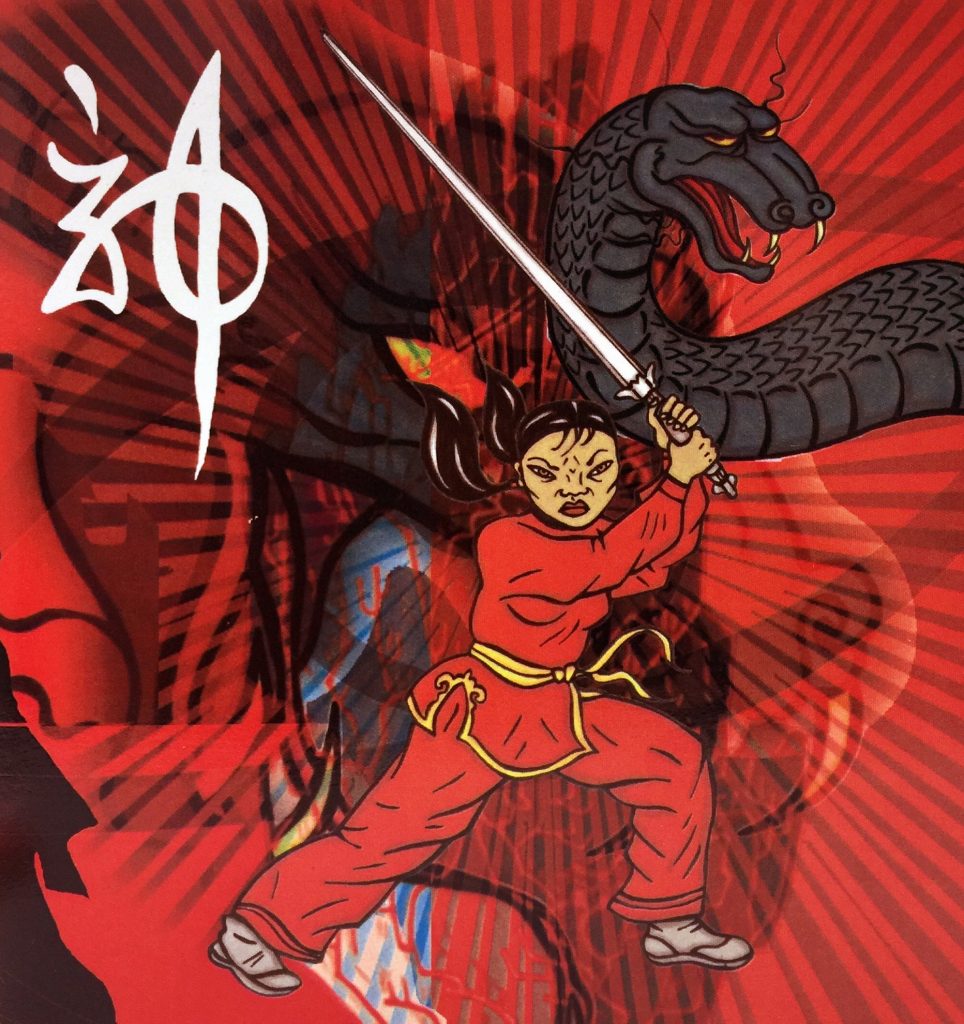Kate Beynon, Video, Film, 2000, China, multicultural, identity, Melbourne, Chinatown, immigration, racism,
Summary
In 21st-century urban Melbourne, Li Ji experiences flashback scenes from her past life as a warrior girl in ancient China.
In a story, originally by Gan Bao of the Eastern Jin Dynasty (AD 317–420), Li Ji lived in a village on Yongling Mountain that was menaced by a giant python residing in a cave. Each year the python ritually ate a young girl from the village, and it had killed many who had tried to destroy it. Pretending to sacrifice herself as the next victim, Li Ji took with her a sword and a snake-hunting dog and slayed the beast, saving the town and becoming a queen.
In the present day, Li Ji takes a trip to the centre of the city, heading towards Chinatown. After getting off the tram, Li Ji walks past various scenes of contemporary city life: the Unity Arcade shops, a construction site with spray-painted graffiti, an ornamental arch in Chinatown, the Happy Dragon Chinese Restaurant, the Hong Kong–style BBQ shop … The city scenes trigger flashbacks and alternate with visions of her journey on the mountain with her dog, from an ancient Chinese village to her eventual battle with the python in her past life.
Contemplating issues of ethnicity, immigration, racism, Indigenous Australian rights and reconciliation, Li Ji questions her own mixed identity – both Asian and Australian. Gradually, she begins to understand that she has intrinsic strength to combine elements of her background with the present to create a unified existence. 'Li Ji: Warrior Girl' is about asserting a positive mindset for living in a multicultural society, recognising and respecting that issues of race and identity, including a sense of belonging, are everyday internal concerns for many people living in Australia.
